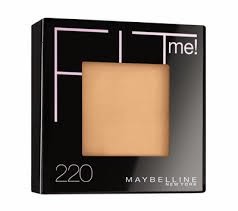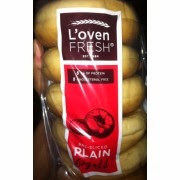Common Molecules, Structures and Names
 |
| IUPAC name: Propane Molecular formula: C3H8 |
 |
| IUPAC name: Propane. The green represents the Carbon and the white represents the Hydrogen. |
 |
| IUPAC name: Acetic acid Molecular formula:C2H4O2 |
 |
| IUPAC name: Acetic acid. The pink represents the Carbon, the green represents the Hydrogen, and the white represents the oxygen. |
 |
| IUPAC name: Proline Molecular formula: C5H9NO2 |
 |
| IUPAC name: Proline. The green represents Carbon, the white represents Hydrogen, the purple represents Nitrogen, and the pink represents oxygen. |
 |
a. Tetradecanol
a. IUPAC name: Tetradecan-1-ol
b. Common name(s): Myristyl alcohol, Tetradecyl alcohol
c. Molecule formula: C14H30O
|
 |
b. Maltitol
a. IUPAC name: Glucopyranosyl
b. Common name(s): Amalty, Lesys, Maltisweet, SweetPearl
c. Molecule formula: C12H24O11
|
 |
c. Magnesium stearate
a. IUPAC name: Magnesium octadecanoate
b. Common name(s): octadecanoic acid, magnesium salt
c. Molecule formula: Mg(C18H35O2)2
|
 |
d. Niacin
a. IUPAC name: pyridine-3-carboxylic acid
b. Common name(s): Bionic, Vitamin B3
c. Molecule formula: C6NH5O2
|
 |
e. Glycerol monostearate
a. IUPAC name: 2,3-Dihydroxypropyl octadecanoate
b. Common name(s): Glycerin monostearate, Monostearin
c. Molecule formula: C21H42O4
|
 |
f. Stearic acid
a. IUPAC name: Octadecanoic acid
b. Common name(s): stearic acid
c. Molecule formula: C18H36O2
|
 |
h. Titanium dioxide
a. IUPAC name: Titanium dioxide
b. Common name(s): Titania, Rutile
c. Molecule formula: TiO2
|
 |
i. Tetrasodium pyrophosphate
a. IUPAC name: Tetrasodium diphosphate
b. Common name(s): Pyrophosphate, Sodium pyrophosphate, Tetrasodium pyrophosphate
c. Molecule formula: Na4O7P2
|
 |
k. Cocamidopropyl betaine
a. IUPAC name: {[3-(Dodecanoylamino)propyl](dimethyl)ammonio}acetate
b. Common name(s): Dodecanamidopropyl)dimethylaminio]acetate
c. Molecule formula: C19H38N2O3
|
 |
l. Copper gluconate
a. IUPAC name: Copper(II) gluconate
b. Common name(s): Copper gluconate
c. Molecule formula: C12H22CuO14
|
 |
m. Sodium chloride
a. IUPAC name: Sodium chloride
b. Common name(s): Common salt, Halite, Rock salt
c. Molecule formula: NaCl
|
 |
n. tert-Butylhydroquinone
a. IUPAC name: 2-(1,1-Dimethylethyl)-1,4-benzenediol
b. Common name(s): TBHQ
c. Molecule formula: C10H14O2
|
 |
o. Propylene glycol
a. IUPAC name: Propane-1,2-diol
b. Common name(s): Propylene glycol
c. Molecule formula: C3H8O2
|
 |
p. Riboflavin
a. IUPAC name: 7,8-Dimethyl-10-[(2S,3S,4R)-2,3,4,5-tetrahydroxypentyl]benzo[g]pteridine-2,4-dione
b. Common name(s): vitamin B2
c. Molecule formula: C17H20N4O6
|
 |
q. glycerin
a. IUPAC name: propane-1,2,3-triol
b. Common name(s): glycerin, glycerine, propanetriol
c. Molecule formula: C3H8O3
|
 |
r. Citric acid
a. IUPAC name: 2-hydroxypropane-1,2,3-tricarboxylic acid
b. Common name(s): 3-carboxy-3-hydroxypentanedioic acid, 2-hydroxy-1,2,3-propanetricarboxylic aci
c. Molecule formula: C6H8O7
|
 |
s. Polydimethylsiloxane
a. IUPAC name: poly(dimethylsiloxane)
b. Common name(s): PDMS, dimethicone, E900
c. Molecule formula: (C2H6OSi)n
|
 |
t. Dipotassium phosphate
a. IUPAC name: Potassium hydrogen phosphate
b. Common name(s): Potassium monohydrogen, phosphate, Phosphoric acid
c. Molecule formula: K2HPO4
|
Look over your molecules and the bonding characteristics, how many bonds does each of the following elements typically have?
- Carbon: 4
- Hydrogen: 1
- Oxygen: 2
- International Union of Pure and Applied Chemistry
- The company says that this product is chemical free, but technically it is not chemical free. Typically, when companies say chemical free they usually use ingredients such as vinegar, lemon juice, and baking powder. Those ingredients are effective cleaning products and do not affect the environment negatively, but they are still chemicals. Just because they contain natural ingredients which make them seem “less chemical” doesn't mean there are no chemicals, most of those natural ingredients contain many chemical compounds found in nature. Most likely all cleaning products that say “chemical free” do contain some type of chemical.

No comments:
Post a Comment